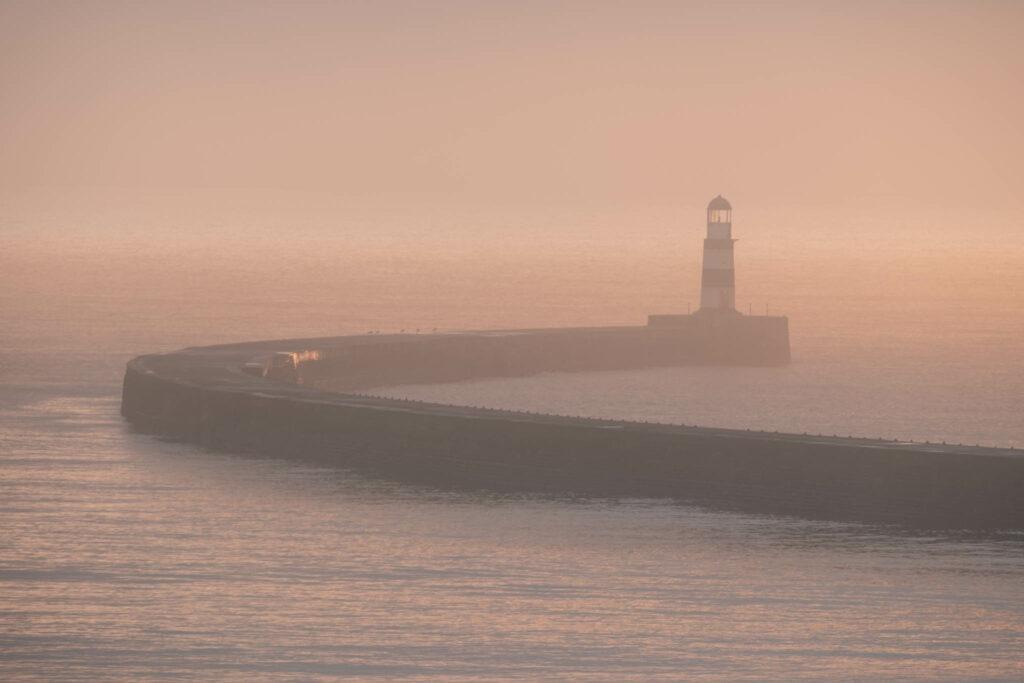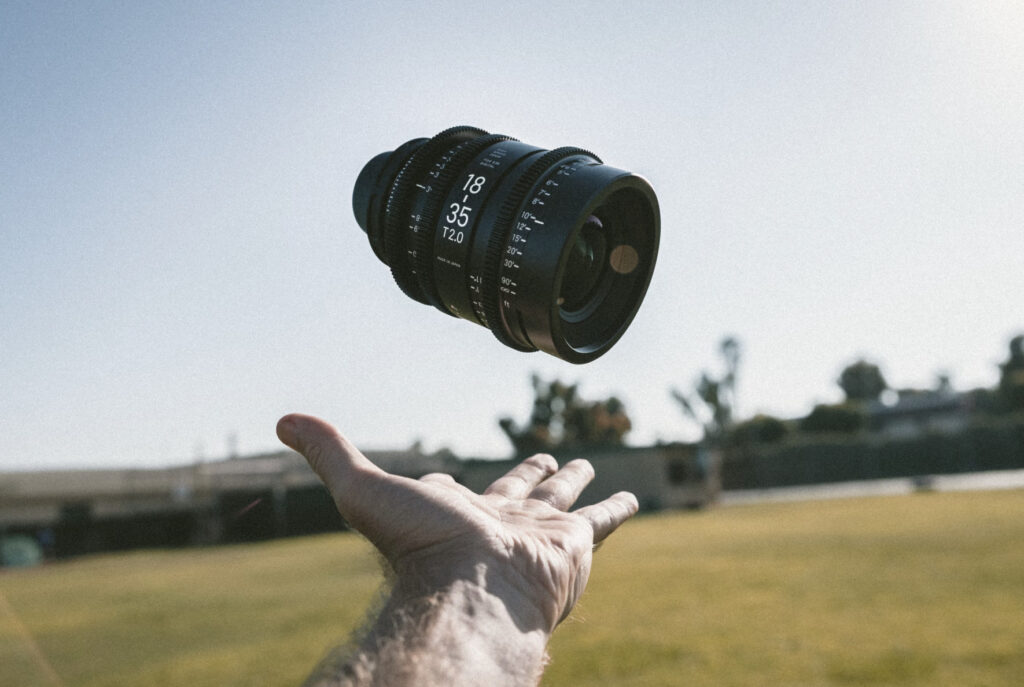Let’s talk about prime lenses for street photography. Almost since its inception the genre has been dominated by a few specific focal lengths. And there are good reasons for that – both practical and aesthetic. So let's take a look at them and explore some of the reasons any budding street photographer might want to start with one of the prime lenses at these focal lengths.
Personally, I only use prime lenses when out shooting on the streets, because they have the special quality of appearing very unthreatening to people, at least by comparison to zooms. It's great to work with primes, because they force you to move physically instead of just turning a barrel wheel to get a composition that you like. Often they are faster and sharper than their zoom cousins too so the final shot is often sharper than what you might otherwise have ended up with.

One of the greatest documentary photographers of all time said: “If your pictures aren't good enough, you aren't close enough.” That was Robert Capa. Google him if you don't know yet; trust me. The premise is so true. You will fall even more in love with photography, because you are going to FEEL the moment instead of just capturing it. There is a huge part of photography that can't be expressed in the final result; it’s the thrill of getting close to the moment you want to capture.
Anyway, onto the primes…
28mm
This is my favorite focal length when working on the streets. You have a very wide view of the scene, but it still doesn't look exaggerated. They are built roughly, like mini tanks and they rarely break. They are pretty fast and silent. Even with the lens hood attached, they are quite inconspicuous meaning you draw slightly less attention to yourself compared to a zoom.

35mm
This has been the standard lens when working on the streets for a long time now for thousands of photographers. The great masters of street photography loved this focal length. For my taste, it is still a little bit tight of a focal length. And, there is another disadvantage I have seen in recent state-of-the-art 35mm lenses; they are big and a bit more conspicuous.

50mm
The greatest charm of working with this focal length is that it has roughly the same angle of view as the human eye (on a full frame camera), so you get to see exactly what your eyes are seeing when using this focal length. That is roughly 46%. There are very cheap options as well, and they have pretty fast apertures. The 50mm 1.8 made by Canon and Nikon is arguably the best value lens ever built.
All of these focal lengths are pretty standard in the photographic industry; they are even standard in the film industry. So, it doesn’t matter what brand or system you use, there is a pretty good possibility of finding any a prime lens at one of these focal lengths for your camera. You have to be aware that when working with APS-C sensor cameras, you have to convert these focal lengths to the crop factor of your camera. In the case of a 28mm, you'll end up with a more or less 45mm equivalent; 35mm will transform into a more or less 55mm; and a 50mm will end up as a more or less 80mm lens. Still, they are great focal lengths.

Bonus Tip: Pancake Lenses – I've recently been so in love with pancake lenses that I have to recommend them. Give them a try. They are cheap; they are fun; they are very well-built; and they are so inconspicuous that you'll achieve such natural results when working on the streets that you are just not going to believe it! Since the days of film, pancake lenses have been around, and it seems that they are coming back from the ashes thanks to mirrorless cameras, but they work just fantastically on DSLRs as well.







10 Comments
I swear by my Pentax 40mm XS pancake lens. Very fast, very sharp, very unnoticeable since it is so compact. I like it’s 21mm counterpart as well
50mm The greatest charm of working with this focal length is that it has roughly the same angle of view as the human eye (on a full frame camera), so you get to see exactly what your eyes are seeing when using this focal length.
This is an oft repeated myth. 50 mm does not have the same focal length as the human eye. The human eye is not a camera system and it works in a very different way. The human eye has a focal length of approximately 22 mm and field of view of approximately 120 degrees. What the author perhaps meant to say, is that the human eye has a very similar perspective to one given by a 50 mm lens. The central part of human vision is approximately the same as one seen by a 50 mm lens – but it’s very different to saying that is has the same focal length.
I wish that my favorite and usually authoritative photography website didn’t publish articles with such basic errors.
I know what you mean. I do so wish that authors would preface their articles with “What follows is pertinent if you have a full frame camera sensor”.
For starters, it referred to having the same angle of view, not focal length, hence your comment is a bit of a straw man.
Now, sure the angle of view of the human eye is over 120 degrees, but that is misleading because the closer to the periphery the object, the less sharp it gets. The CENTRAL angle of view of a human eye is between 40 and 60 degrees (ie where we actually see things that we can recall without moving our eyes as opposed to just sensing them on the periphery).
A 50mm lens on a full frame camera will give you an angle of view of 43mm. Hence, roughly the same as a human eye for practical purposes.
I a going to leave it there cos these conversations bore me pretty thoroughly. It’s a blog post meant to convey the basics, not an optical engineering paper.
Actually the statement about the 50mm is both right and wrong. The 50mm lens actually closely represents the field of view that the human eye can see detail. Outside of that angle of view, the eye (and brain) has what is referred to as peripheral vision. This extends much wider than the 50mm viewpoint. However, outside of this view the ability to differentiate and recognise detail, as well as identify colours, reduces considerably. The 50mm covers the field of view that is generally accepted to cover what the eye actually ‘sees’
Standard lens values vary according to sensor size and usually the standard focal length is loosely equivalent to the length of the diagonal of the sensor, so for a full frame sensor then it would be 43mm and for a cropped sensor it would be approximately 30mm.
Industry has, basically, decided to adopt specific focal lengths which loosely match these figures. We all accept that the 50mm is the standard for full frame/35mm cameras and 35mm for the cropped sensor.
At the end of the day, regardless of what Federico says in his article, everyone has their own personal preference and what works for Federico might not necessarily work for everyone else. The bottom line – get out there and experiment, find your own space.
Yo no soy profecional pero si soy muy aficionado a la fotografia y mas a Street Photography, claro al igual que usted creo que todo es preferencias y costumbres, para este menester de la calle yo uso el 16mm de la Sony es un gran wide angle y si quiero algo más abierto usó el adapter ultra wide converter de la Sony con la cámara A6000, también tengo otras formas con otros lentes, como por ejemplo uso el Promaster 19-35mm o el Tamron 24-70mm ASPHERICAL con Sony A99, los resultados son geniales.
He usado este que usted dice Olympus 28mm con adapter para la Sony NEX5T, muy buen resultado también.
Muchas gracias por vuestro articulo.
I am not a professional but if I am very fond of photography and more to Street Photography, clear as you believe that everything’s preferences and habits, so this task street I use the 16mm Sony is a great wide angle and if i want something more open adapter used the ultra wide converter with the Sony A6000 camera, i have other ways with other lenses, such as the use Promaster Tamron 19-35mm or 24-70mm ASPHERICAL with Sony A99, the results are great.
I have used this you say Olympus 28mm adapter for Sony NEX5T very good result too.
Thank you very much for your article.
I appreciate your comments at the end of the crop factor effect. Most of us don’t have full frame dslrs.
I would add that using a Lensbaby in this mix would make the images a lot of fun too.
According to my opinion focal length 24mm , 50mm and 100mm is the ideal for street photography which I am using for many years. From wide angle to tele side you can guess that you will cover half size of subject and from tele to wide angle you will get double the area covered. So it is very easy to work which focal length to change. These three lenses are available in fast focal length.